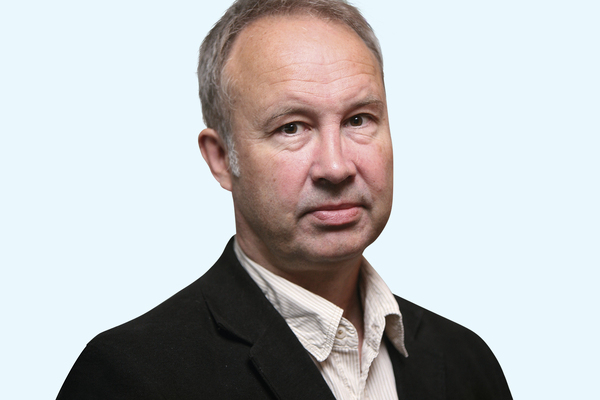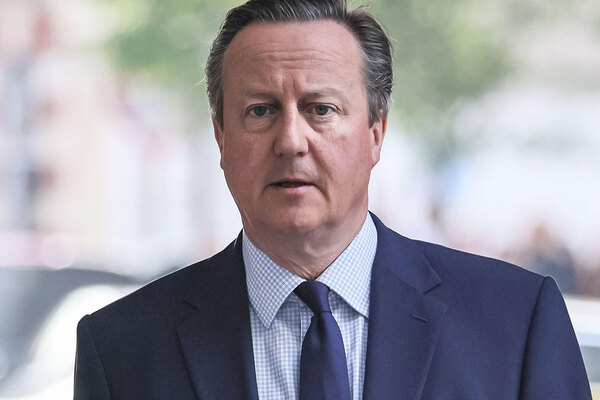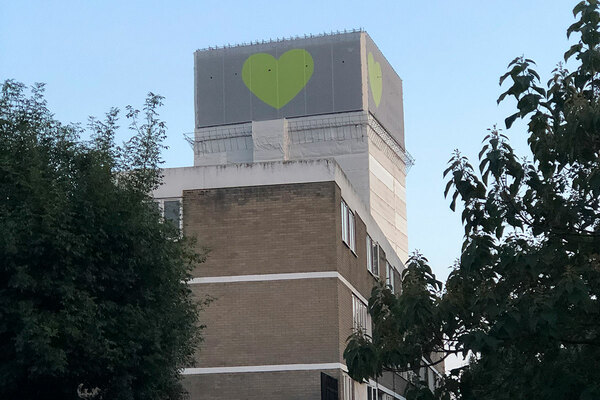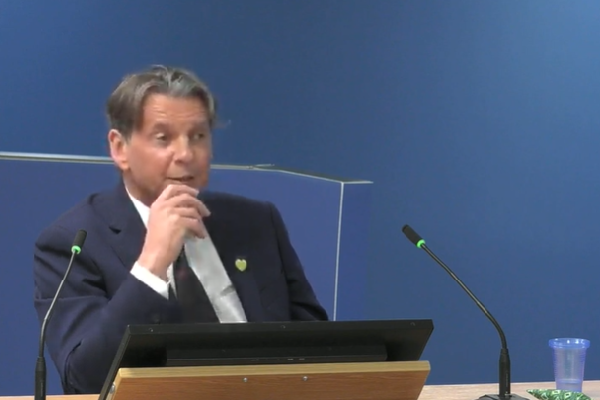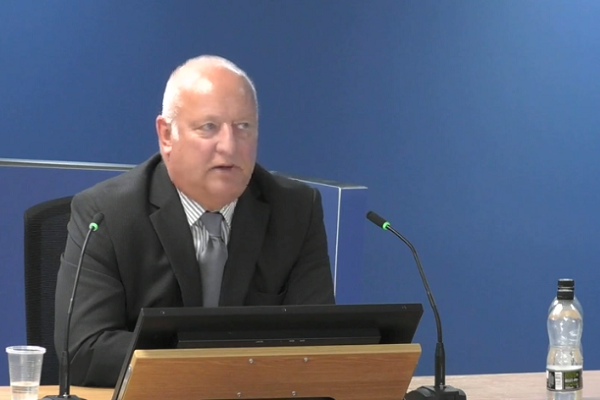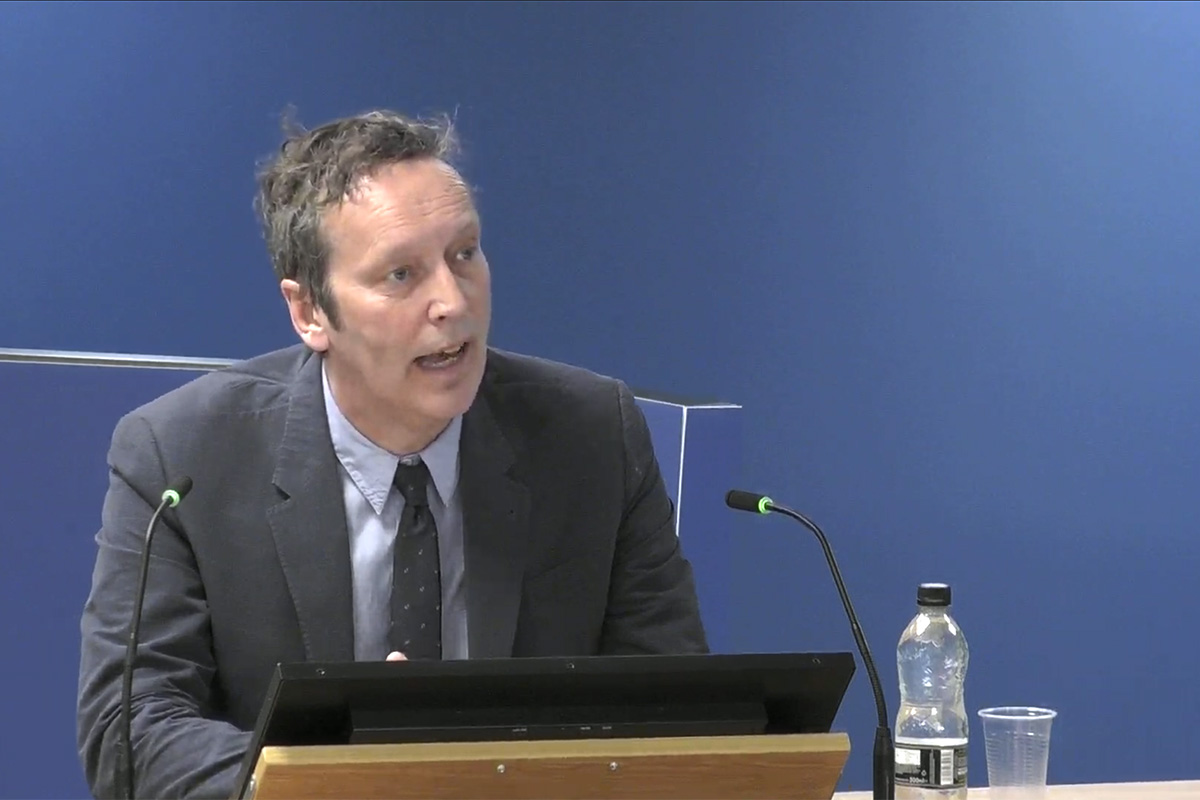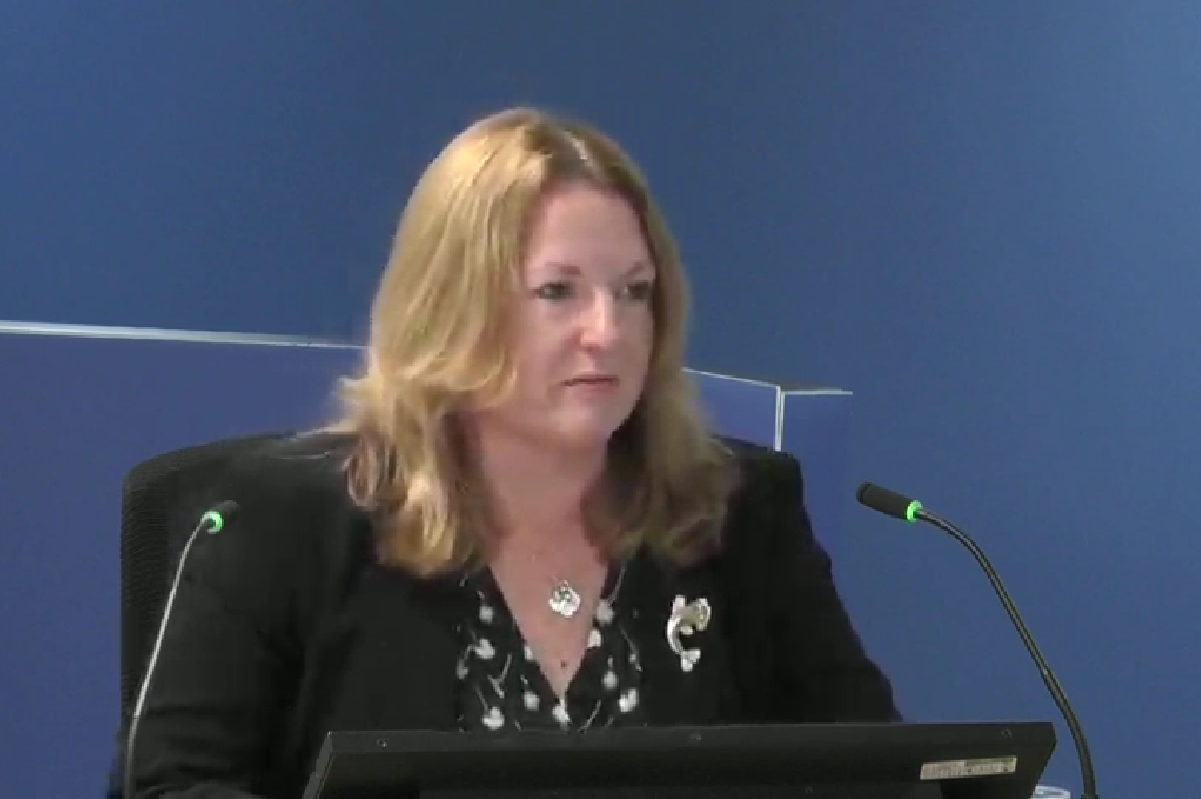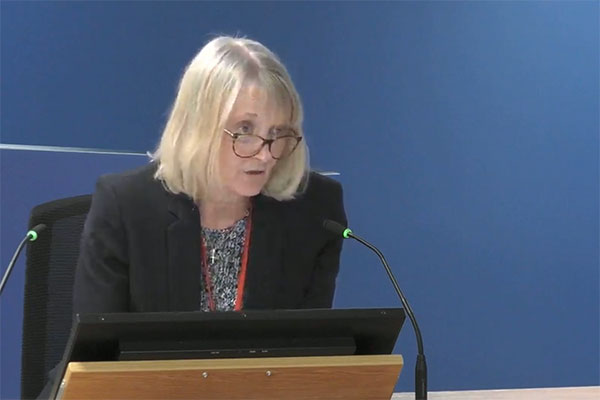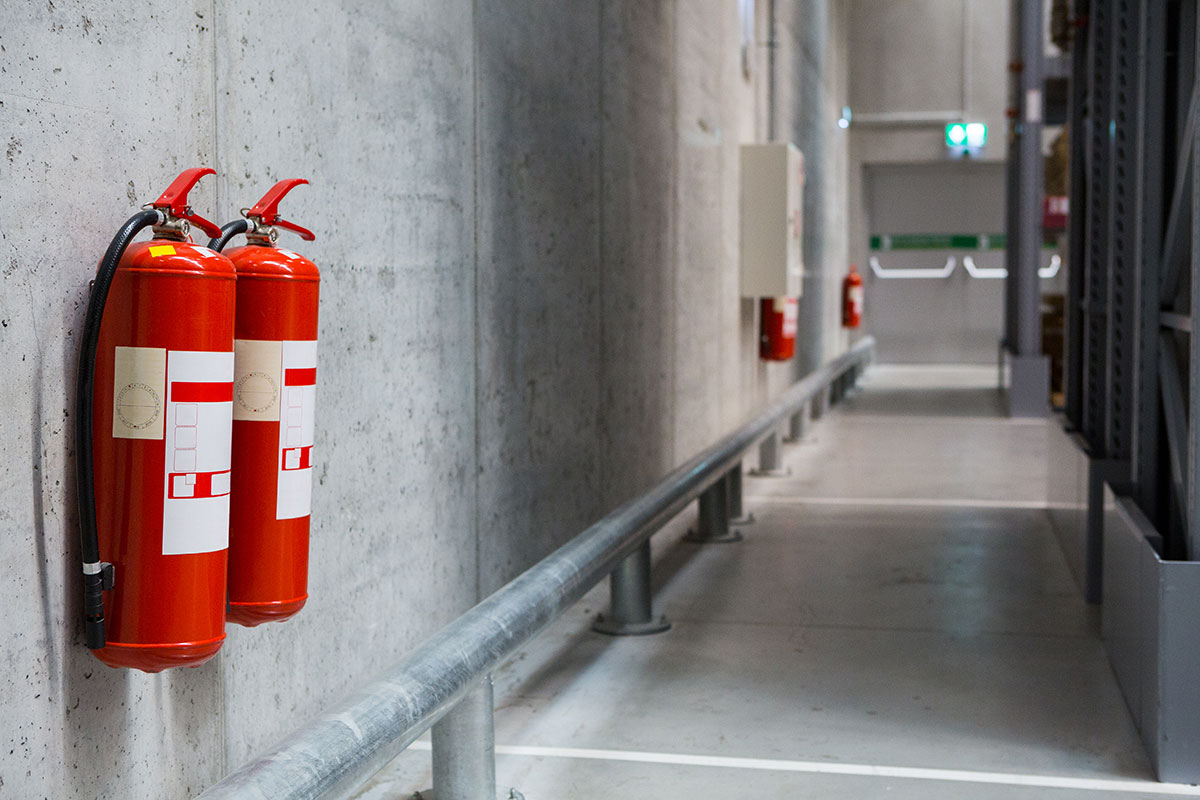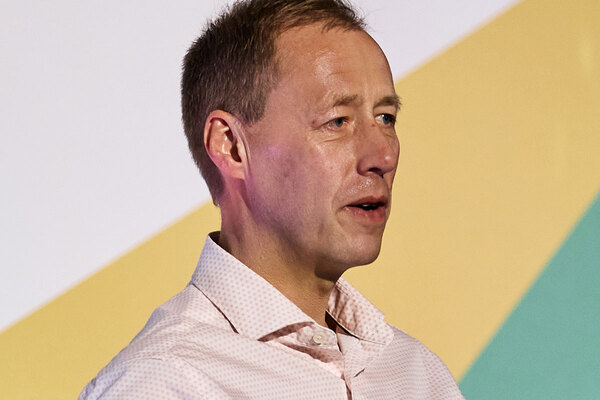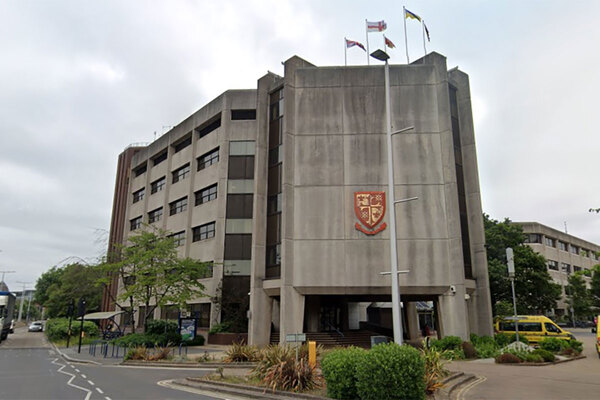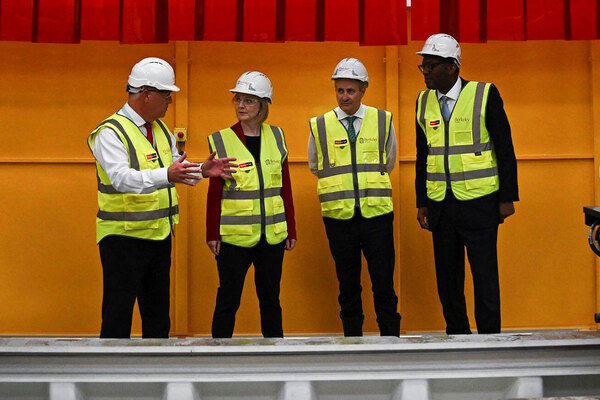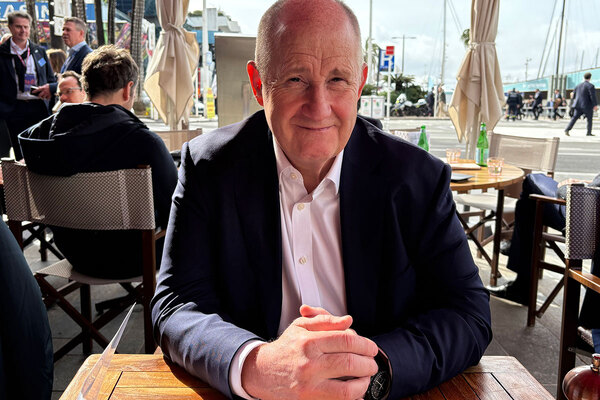‘A culture of concealment that started at the top’: what the Grenfell Tower Inquiry report said about KCTMO
The Grenfell Tower Inquiry final report slammed social housing manager Kensington and Chelsea Tenant Management Organisation for “chronic and sustained” fire safety failures. But what were they? Peter Apps runs through the detail
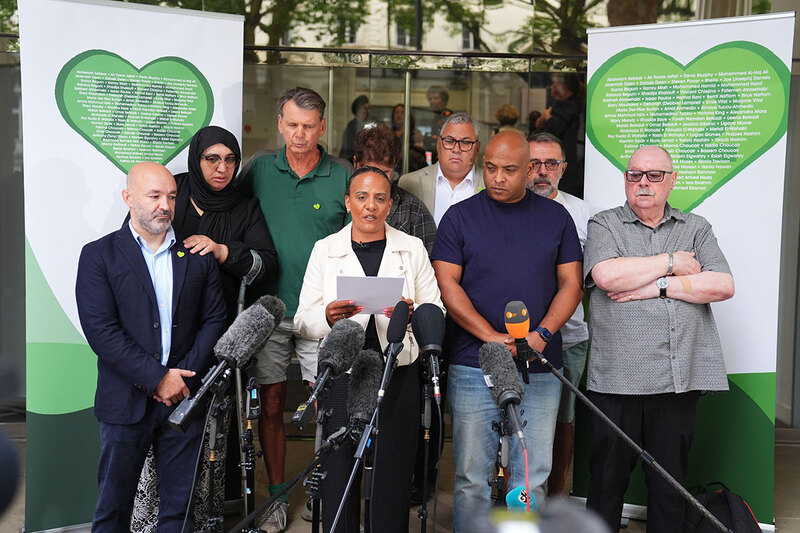
Let’s start by explaining the structure of social housing management in Kensington and Chelsea – and some of the key people.
The Royal Borough of Kensington and Chelsea (RBKC) owned and managed its own housing stock until 1996. At that point – amid an outsourcing policy drive from central government – it created Kensington and Chelsea Tenant Management Organisation (KCTMO), which was a unique extension of tenant management bodies present on many estates around the country.
It was a borough-wide manager, with tenants forming the majority of its board, and members (residents) given a vote on new board members. From 2001 onwards, however, KCTMO legally became an arm’s-length management organisation (ALMO) – a similar arrangement to hundreds of others around the country. The arrangement was simple: it was responsible for maintenance and repairs of the housing stock, and proposing major works. The council provided its budget, and monitored its work via its scrutiny committee.
For the period examined by the inquiry, its chief executive was Robert Black, who had previously been an executive director at housing association Circle – one of the organisations which later became Clarion. Health and safety compliance was the responsibility of Janice Wray, who reported to finance director Barbara Matthews. Ms Wray relied on a private contractor, Carl Stokes, for fire risk assessments and general advice about fire safety. At the council, director of housing Laura Johnson was the key figure.
‘A culture of concealment that had started at the top’
The executive team “relied heavily” on Ms Wray to manage health and safety issues, the report said. She was given “broad autonomy” to look after these complex legal responsibilities, with her manager, Ms Matthews, having “no training and no experience” in the field.
“The responsibilities she [Ms Wray] was given were probably too much for one person to discharge properly without substantial assistance and effective oversight. Unfortunately, she had neither,” the report said, adding that senior managers were either not aware that there was “simply too much for her to do”, or were aware but “willing for her to just get on and do her best”.
The report reserved some of its sternest criticism for what it called “a culture of concealment” from KCTMO’s management, where important information about fire safety was “deliberately withheld” from its own board and those who oversaw its work at the council. It found Ms Wray and Ms Black “seriously at fault” and said Mr Black’s behaviour over the years showed a “pattern of withholding from those to whom he reported that there were serious problems with management of fire safety”.
This included a fire at Grenfell Tower in 2010, when smoke spread from the ventilation system to eight floors, trapping residents in their homes. But Ms Wray’s report of the fire to the board “grossly understated” this failure and was “seriously misleading”, the report said.
Mr Black was also found to have “deliberately” withheld information about a deficiency notice issued by the London Fire Brigade (LFB) from the board and the scrutiny committee at the council, which was described as a “serious dereliction of duty” on his part. It highlighted several other instances where Ms Wray or Mr Black were not candid about fire safety issues.
The report said that while the organisation had a satisfactory method for drawing matters of concern to the attention of the board and scrutiny committee, the system was let down by Mr Black’s “entrenched reluctance” to tell them what he knew about fire safety deficiencies. It said there was “a culture of concealment that had started at the top and filtered down to lower layers of management”.
‘Ignoring residents’ views was entirely consistent with TMO’s approach to engagement’
The relationship between KCTMO and many of the residents of Grenfell Tower was bitter, characterised in the words of the report by “distrust, dislike, personal antagonism and anger”. The report’s story of this situation began with two independent reports into the relationship between KCTMO and residents in the borough in 2009, both of which found major problems and both of which recommended change.
Some of these recommendations included “mediation and conciliation” to repair trust with residents and an audit from the council to ensure that it was capable of delivering major works and cyclical repairs.
While witnesses from KCTMO and the council said these recommendations were implemented, the report was scathing. “It says much about the TMO’s character as an organisation that despite those penetrating reports, eight years later it showed little sign of any change and appeared to have learned nothing about how to treat or relate to its residents,” it said.
A ‘modular management agreement’ between KCTMO and RBKC committed the management body to consult with residents when undertaking major works, like the refurbishment of Grenfell Tower.
While some consultation was undertaken, this process was limited to surveys, which did not ask for views on important matters relating to the refurbishment. The project team carrying out the refurbishment did at one stage suggest setting up a focus group of residents, but never went through with it. KCTMO itself ran public meetings until December 2013, but then stopped them – which the report called “regrettable”.
Meanwhile, as frustration over the refurbishment built, residents of the tower tried several times to form a group to speak collectively to KCTMO about their concerns. But KCTMO’s management repeatedly refused to recognise the group, saying that since the estate already had a residents’ association, it did not want to recognise a second one.
Privately, KCTMO’s staff said they preferred to engage with residents “individually” and did not want the new group to become a “platform” for tenant Eddie Daffarn – who had raised a number of complaints about safety and maintenance previously, including on a blog he co-wrote.
When Mr Daffarn wrote up a report of a meeting attended by more than 100 people in 2015, Peter Maddison, director of assets at KCTMO, asked their legal team to investigate whether or not they could sue him for libel.
A group of residents was finally recognised by KCTMO in summer 2015 after the intervention of the local MP, but this was a year before the refurbishment completed. “The residents of Grenfell Tower had never before been given any collective say in relation to [the refurbishment] as required by the agreement between the TMO and RBKC,” the report said.
After a petition by residents to the council’s scrutiny committee, the council asked KCTMO to review the refurbishment. It did this without resident involvement – in direct contravention of the requirements of its own management agreement – and concluded that it and the contractors had done a good job, with no mention of the complaints raised by residents, which included a petition signed by more than 100.
“Ignoring residents’ views was entirely consistent with the TMO’s approach to engagement with its residents,” the report said.
It went on to conclude that residents of Grenfell regarded the TMO as “an uncaring and bullying overlord, which belittled and marginalised them, regarded them as a nuisance [and] failed to take their concerns seriously”. It placed the blame for this with the TMO’s management, saying it had “lost sight of the fact that its residents were people who depended on it for a safe and decent home”.
‘It betrays a fundamental carelessness about fire safety’
Initially, KCTMO’s own staff carried out risk assessments, but after the LFB warned that they were not up to the necessary standard, they agreed to appoint an external contractor.
In 2009, external consultancy Salvus produced a report into its general fire safety management at KCTMO, which included 25 deficiencies – many of them ranked high priority and posing a direct risk to life, such as the absence of an overall fire safety policy for the organisation.
Ms Wray did not communicate this clearly to the board, but instead merely told them a report had been received which said KCTMO had good safety policies which were not consistently documented.
The organisation did go about implementing an overall strategy, but it made “glacial” process, taking three years when the report said it should be done in three months. Some recommendations – such as a managerial audit of fire safety arrangements – were not done at all before the fire. “No explanation has been given for those chronic failings,” said the report.
A further report was commissioned in 2013, this time by consultant Matt Hodgson, following RBKC’s own audit of KCTMO giving it ‘limited’ assurance over fire safety. He found 39 failings – echoing the previous criticisms of Salvus in many instances. But Mr Black did not reveal these failings in his report to the board on what had been found. The inquiry report said this was “a very serious failing” and concluded that he had done it to avoid “embarrassment” and “difficult questions”.
As well as producing the audit, Salvus initially carried out fire risk assessments from around 110 individual buildings for the TMO. But Ms Wray did not like their approach, calling it “very rule bound”, saying she wanted a fire risk assessor who would “challenge” the LFB.
As a result, she appointed Mr Stokes, a retired firefighter with limited experience, who had been working as a sub-contractor for Salvus. He was described as a “one-man band” in the report, which noted that he included a series of ‘post-nominals’ in his tender which implied he had a range of fire safety qualifications and professional body memberships that he did not actually hold.
The report said “all but one” of these related to qualifications that “did not exist, were irrelevant or meaningless”. The only one that was valid showed he belonged to the Chartered Institute of Arbitrators, which had “no bearing on fire safety”.
The report said this “showed a lack of integrity and reliability” on the part of Mr Stokes, but added that “the failure of the TMO and RBKC to pay any serious attention to his supposed qualifications represents the more serious failing, since it betrays a fundamental carelessness about fire safety”. It added that his willingness “to be an advocate for the TMO in disagreements with the LFB was a material factor in the decision to appoint him”.
He was initially appointed for lower-risk buildings but, in the words of the report, was “allowed to drift into” the role as the sole risk assessor for all 650 buildings which came under the requirements of the Fire Safety Order. It called this “not a proper or safe way” for either RBKC or KCTMO to discharge their duties.
Mr Stokes admitted during evidence that he copied and pasted text between fire risk assessments to save time, leading him to refer to Grenfell Tower’s balconies on several occasions despite the building having none. The report called this “lazy and careless” and “very bad practice”, but added it was “worse” that nobody at KCTMO had noticed these errors. “Failing to read such important documents with care reflected the TMO’s casual approach to safety,” it said.
Mr Stokes also included a statement in all his risk assessments that KCTMO did not have to share it with anyone, including the LFB. The report called this “unnecessary, confrontational and wrong in law”.
It did add, however, that Ms Wray could not monitor the technical quality of his document “since she had neither the technical expertise nor the time” and was “overworked as it was”.
It said Mr Black had “never brought his mind to bear” on how a sole trader could do all of the fire risk assessments, or whether Ms Wray had sufficient resource to manage them. The report said this indicated he had “a lack of interest in fire safety” which “goes a long way to explain the casual approach to fire safety”
of KCTMO as a whole.
‘A betrayal of its statutory obligation to tenants’
The report said that while Mr Stokes claimed, when carrying out fire risk assessments, to have gone round the building with a checklist of previous significant findings to check they had been completed, a review of his paperwork led them to “doubt that he did in fact adopt this approach”.
What is clear is that the recommendations were often not being followed up on. While KCTMO had set aside budget for the fire risk assessments themselves, they had no separate budget to complete the works it recommended. This meant money for anything which needed to be done as a result of the assessments had to come from regular budgets for things like planned or reactive works – and the organisation struggled to do this, building up a backlog of incomplete items which it was trying to reduce at the time of the fire.
The report went into detail over an episode where KCTMO staff sought to persuade Mr Stokes to reduce the priority of his recommendations, so that they would be under less pressure to meet them. It said they had “challenged his professional judgement and sought to persuade him to change his findings”, despite having no experience or training in fire safety management themselves.
In particular, Mr Maddison pressured him to downgrade advice on the requirement to fit self-closing devices from high priority to “strong advice” only.
The report said Mr Stokes’ conduct in agreeing to do so “was not consistent with the standards expected of a reasonably competent fire risk assessor” and Mr Stokes was “not acting professionally” in doing so.
It said the episode “illuminates so well” KCTMO’s approach to fire safety, and that in seeking to “challenge and dilute” the risk assessment, it was “treating fire safety as an inconvenience rather than an essential aspect of its care for those living in buildings under its management”. The report said: “It was a betrayal of its statutory obligation to tenants.”
‘It is evident… that money, again, was the driving force behind her refusal’
Fire door self-closers were one of the most significant fire safety failures at Grenfell Tower, probably second only to the combustible cladding on its walls. The fact that so many were missing or broken on the night of the fire was the main reason smoke spread so quickly from the burning cladding and flats into the communal areas, impeding both residents’ escape and firefighters’ efforts at rescue. This has been called a “key event” in the deaths.
The report set out how a major fire door replacement programme, beginning in 2011, led to the installation of ‘Manse Masterdor’ fire doors across KCTMO’s stock. These doors had many deficiencies, one of which was an inherent problem with the self-closing device, which took the form of a chain inside the door itself rather than an overarm at the top.
The screws in the devices were too short and would sometimes be pulled out by the weight of the door, which meant the device regularly broke, meaning doors would either stick open or closed, or become too difficult for residents to open. The report said this caused a “systemic problem throughout the TMO stock” and “the TMO knew” that this was going on.
Manse Masterdor was also aware of this fault, with senior staff exchanging emails about it in May 2011. At this point, only 17 doors had been fitted at Grenfell Tower.
Mr Stokes discovered this problem with doors at Grenfell Tower and another block during risk assessments in summer 2011, and told KCTMO, who in turn emailed Manse Masterdor.
This resulted in Manse Masterdor discussing the replacement of some screws on impacted doors with KCTMO, but the report said there was “no evidence” any were actually replaced. Rather than check that any work had been done, KCTMO and Mr Stokes were said to have “assumed the problems had been resolved”.
In fact, at Grenfell Tower, contractors and care-takers were responding to problems reported by residents by simply removing and not replacing the self-closing devices, something which the tower’s caretaker directly told Ms Wray about in December 2015.
And KCTMO had no policy providing for regular inspection of flat entrance fire doors, despite this being a requirement of guidance and something the LFB directly advised them to do on multiple occasions.
Fire doors were checked when flats became vacant or during major works, which the report called “inadequate” and said “fell far below acceptable standards”.
Ms Wray said this was due to “resource” and difficulties accessing flats, but the report said this was “based on an assumption that money would not be available” and “neither she nor anyone else made any serious effort to obtain additional resources”.
The LFB stepped up its concern in October 2015, when it realised self-closing devices were missing on all the doors in Adair Tower, barely a mile away from Grenfell. Mr Stokes had noticed this, but decided it was not a breach. The LFB issued a deficiency notice covering the tower.
Nineteen days later, a major fire broke out at the property and spread severely due to missing self-closers. As a result, the LFB scaled its deficiency notice up to a more severe enforcement notice, and told KCTMO to adopt a regular programme of checks on fire door self-closers across its stock and replace all those missing within a year. The report described this as “a clear and unambiguous warning” about the risks.
However, KCTMO did not act. Ms Wray emailed several other London housing providers (not named in the report) to ask if they had regular checks in place, and discovered that most did not.
And when the issue was discussed with the council, Ms Johnson, the director of housing, suggested spreading the replacement programme over five years for “financial and practical reasons”, and that inspections should not happen as they would be “a regular burden” on the housing budget. It said she had taken no advice about the safety consequences of this and “money was the driving force” in her decision. The report said her actions “failed to give sufficient weight” to the warnings issued by the LFB.
A specific deficiency notice covering Grenfell Tower was issued by the LFB in November 2016, warning that the escape routes could be compromised by failing self-closing devices. It should have been addressed by May 2017.
Despite occasionally referring to some doors with missing self-closers, Mr Stokes had never warned KCTMO that there was a systemic problem in Grenfell Tower. The report said the evidence suggested Mr Stokes did not check the inside of doors in Grenfell Tower, only inspecting them visually from the outside and only seeing that self-closers did not work when he happened across a door that was open. This was despite having learned about the systemic issue with self-closing devices in the new doors from as early as 2011.
At a management meeting in February 2017, KCTMO’s executive discussed the issue of self-closing devices, with a report from its repairs team estimating that half of their flats did not have self-closers and that, of those that did, 40% didn’t work. This would mean that, across its stock, just 30% of doors had functioning self-closers.
On the night of the fire, the report said, 77 of 120 doors at Grenfell Tower had defective or missing self-closing devices, with disastrous consequences for the victims of the fire.
‘His advice amounted to a suggestion that she should lie to the LFB’
The presence of residents with disabilities in Grenfell Tower, and the failure to plan for their evacuation in an emergency, is a huge part of the story of the disaster – and one which always extended well beyond west London and continues today.
The inquiry has recommended the development of ‘personal emergency evacuation plans’ (PEEPs)for residents with disabilities, as is the case in an office environment. This was initially rejected by the Conservatives but has been taken on by the new government.
The report did say it was “difficult to see what additional measures” KCTMO could have taken to help residents with disabilities once they entered the common parts in the tower. But it also said the provider had a responsibility to “identify and record the presence of residents with disabilities and the nature of those disabilities”, and issued stern criticism for its failure to do so.
The report said that the LFB had raised concerns about a lack of planning for the escape of residents with reduced mobility in a KCTMO-run block from as early as 2009. This warning was discussed by senior staff at KCTMO and RBKC, which the report said meant both organisations were aware “at the highest level” of this issue from eight years before the Grenfell fire.
The Salvus report – referred to previously – also raised the issue of vulnerable residents, giving what the report called a “clear and well made” recommendation about the need to introduce a formal documented system. “It was not implemented by the TMO,” the report said.
In 2010, Mr Black told senior RBKC staff that KCTMO had produced a small number of PEEPs, and would extend the work to other residents and also provide “generic” PEEPs for certain buildings. But the report said this advice was “misleading” and no such work was, in fact, under way. When the LFB later asked for more details about residents with disabilities, Ms Wray forwarded the email to Mr Stokes who told her to “say that she was not aware of anyone”. The report concluded, despite Mr Stokes’ claims to the contrary when questioned, that this “amounted to a suggestion that she should lie to the LFB”.
In his six risk assessments of Grenfell Tower, Mr Stokes repeatedly recorded that there were no residents who would “struggle to hear a shouted warning of fire”, but made no further comments about vulnerability.
The report said this failure meant it was “bound to conclude” that his risk assessments were “inaccurate and out of date” and not “suitable and sufficient”, which would mean they represent a breach of fire safety laws on the part of KCTMO if a criminal court were to agree with this conclusion.
Even though they were not common in the sector at the time, the LFB repeatedly requested the installation of a premises information box at Grenfell, in which it wanted to include the location of vulnerable residents. But Mr Stokes told KCTMO they had no obligation to install one. The report called this advice “foolish”, saying he had “no obvious reason to refuse the LFB’s request”. No such box was ever installed at Grenfell and the report said KCTMO had “no good reason for its failure to do so”.
Some information about residents of the tower with disabilities was collected by KCTMO through tenancy audits, and then again by Rydon, the contractor in the refurbishment. The latter effort identified 57 residents of Grenfell as having a cognitive, mobility or sensory impairment in November 2014.
But this was never recorded on KCTMO’s spreadsheets, which meant it was not included in the document ultimately sent to the LFB on the night of the fire as they attempted to rescue those trapped in the tower (although the delay in sending this document meant that it was too late by the time it was sent anyway).
KCTMO’s information about residents’ vulnerabilities was, in fact, spread across three different data stores and never properly collated.
The report said: “The TMO’s failure to collect such information illustrates a basic neglect of its obligations in relation to fire safety.”
All Inside Housing’s breaking stories on the Grenfell Inquiry Phase 2 report
KCTMO responsible for ‘chronic and systemic’ safety failings before Grenfell fire, inquiry concludes
Grenfell’s social housing provider was responsible for “chronic and systemic failings” in fire safety management, as well as a “toxic” relationship with the tower’s residents, who came to regard it as an “uncaring and bullying overlord that belittled and marginalised them”
Failed by ‘incompetence, calculated dishonesty, and greed’: reactions to Grenfell Tower Inquiry report
Inside Housing is highlighting responses to the second and final Grenfell Tower Inquiry report
The Grenfell Tower Inquiry report may not have made recommendations to social landlords, but it is still a major call for change
Today’s Grenfell Tower Inquiry report surprisingly stopped short of making recommendations for social housing providers. But it did ask them to read it and reflect. This is homework which should be taken seriously, writes Peter Apps
Grenfell Inquiry report elects not to make specific recommendations for social housing providers
The Grenfell Tower Inquiry has made no fresh recommendations for social landlords in its long-awaited Phase 2 report, saying recent legal changes are sufficient to drive reform
‘Complacent’ government ‘well aware’ of cladding risks before Grenfell fire but ‘failed to act’
A “poorly run”, “complacent” and “defensive” government department “failed to act on what it knew” about dangerous cladding in the years before Grenfell, amid an enthusiasm for deregulation which “dominated” its thinking
‘Systematic dishonesty’ by product manufacturers ‘very significant reason’ for Grenfell’s deadly cladding, inquiry concludes
“Systematic dishonesty” by product manufacturers was a “very significant reason” why Grenfell Tower was clad in such dangerous materials, the inquiry report into the fire has concluded
Social landlords must be ‘held to account’ for safety of homes, prime minister says
Sir Keir Starmer has pledged to make sure social landlords are “held to account” for the safety of the homes they provide, in a statement following the publication of the Grenfell Tower Inquiry’s second and final report
Sign up for our fire safety newsletter
Already have an account? Click here to manage your newsletters
